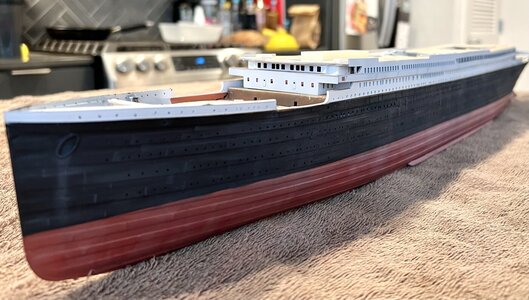- Joined
- Jan 5, 2022
- Messages
- 8
- Points
- 13

I’ve lurked for a while - reading through “ChrisSC”s Titanic build log multiple times.
This is my first build in 20 years - since my teens when I assembled things as fast as possible so I could play with them, lol.
Unfortunately, I didn’t follow ChrisSC’s procedure for dealing with the warping, and am now stumped about how to proceed.
I’ve glued the top 2 decks together, and then glued the superstructure sides to that. I also had to cut off the locating tabs on the hull (that’s another story). I thought that if I fit the superstructure sides to the decks, then the whole subassembly should fit the hull. Well… not so much.
I’ve attached pictures showing how bad it is. I included one “glamour shot” of the forecastle just for fun.
Luckily, I *can* press the forward end down hard enough so that it makes contact with the hull - *without* the superstructure sides breaking or popping off (which was my first concern).
That leaves (at least) 2 problems:
1. Contact with the hull is poor and not even long the length of the ship. I’m not too worried about how it’ll look from below, but I am worried there won’t be enough contact to hold after the clamps are removed.
2. So much pressure is required to make contact that it’s hard to perfect the position. I’m practically crushing certain contact points just to get others to kiss - so there’s no opportunity to slip it left/ right if needed. It’ll also be really hard to apply glue to the hull and *then* get the superstructure in position (without smearing glue everywhere) … but if I clamp it first, there’s no gap in which to apply glue!
I’m really hoping the more experienced folks here can lend some wisdom.
How would you tackle this? Is this doable - or should I buy another kit and throw away months of progress by redoing the superstructure?!
Which end would you glue first (bow or stern)?
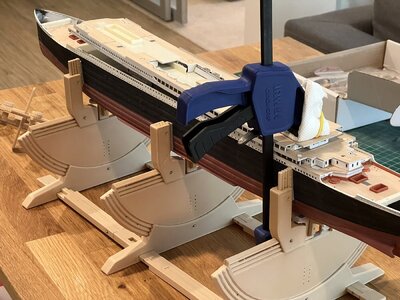
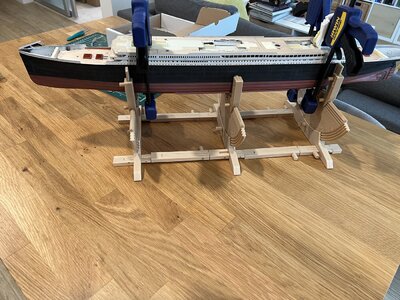
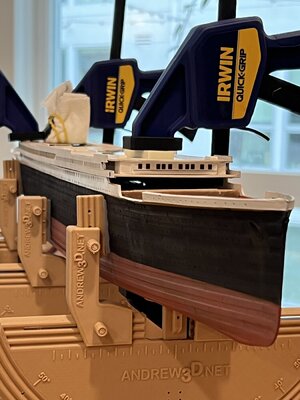
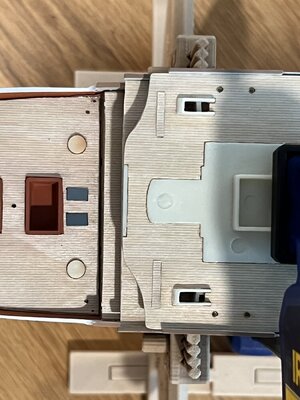
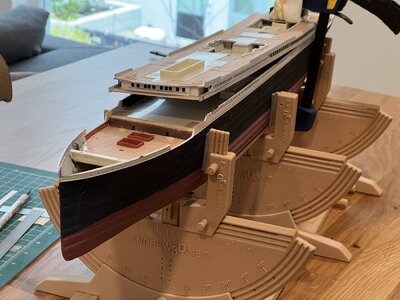
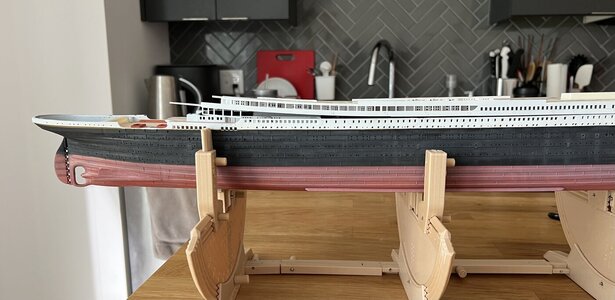
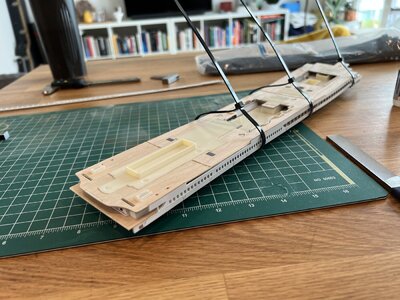
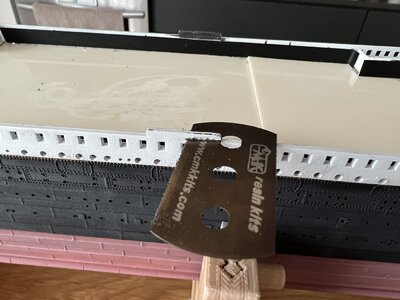
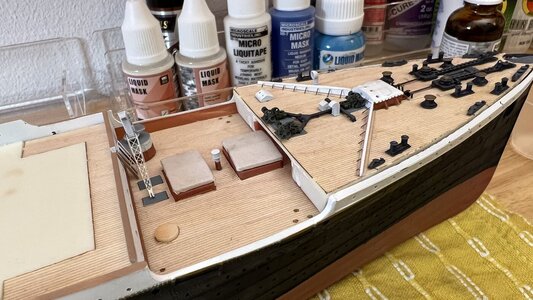
This is my first build in 20 years - since my teens when I assembled things as fast as possible so I could play with them, lol.
Unfortunately, I didn’t follow ChrisSC’s procedure for dealing with the warping, and am now stumped about how to proceed.
I’ve glued the top 2 decks together, and then glued the superstructure sides to that. I also had to cut off the locating tabs on the hull (that’s another story). I thought that if I fit the superstructure sides to the decks, then the whole subassembly should fit the hull. Well… not so much.
I’ve attached pictures showing how bad it is. I included one “glamour shot” of the forecastle just for fun.
Luckily, I *can* press the forward end down hard enough so that it makes contact with the hull - *without* the superstructure sides breaking or popping off (which was my first concern).
That leaves (at least) 2 problems:
1. Contact with the hull is poor and not even long the length of the ship. I’m not too worried about how it’ll look from below, but I am worried there won’t be enough contact to hold after the clamps are removed.
2. So much pressure is required to make contact that it’s hard to perfect the position. I’m practically crushing certain contact points just to get others to kiss - so there’s no opportunity to slip it left/ right if needed. It’ll also be really hard to apply glue to the hull and *then* get the superstructure in position (without smearing glue everywhere) … but if I clamp it first, there’s no gap in which to apply glue!
I’m really hoping the more experienced folks here can lend some wisdom.
How would you tackle this? Is this doable - or should I buy another kit and throw away months of progress by redoing the superstructure?!
Which end would you glue first (bow or stern)?
















